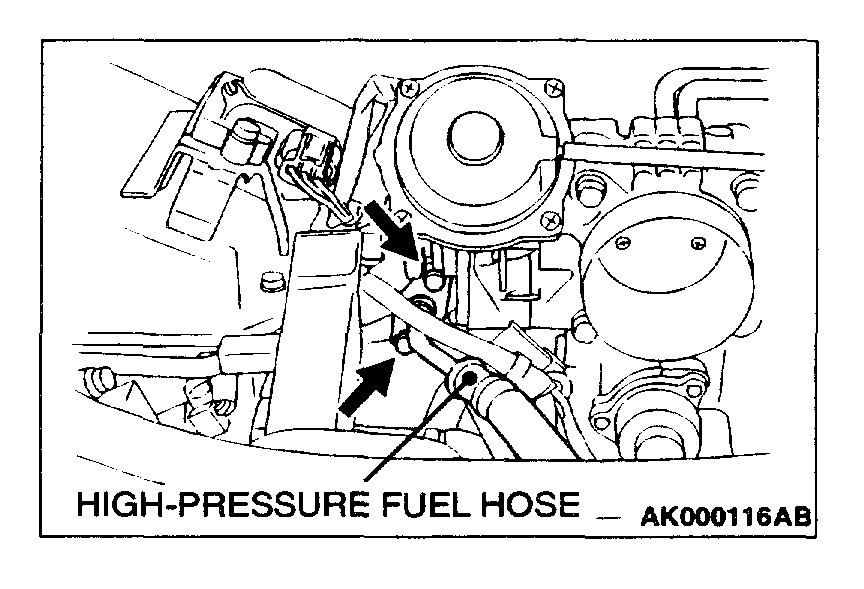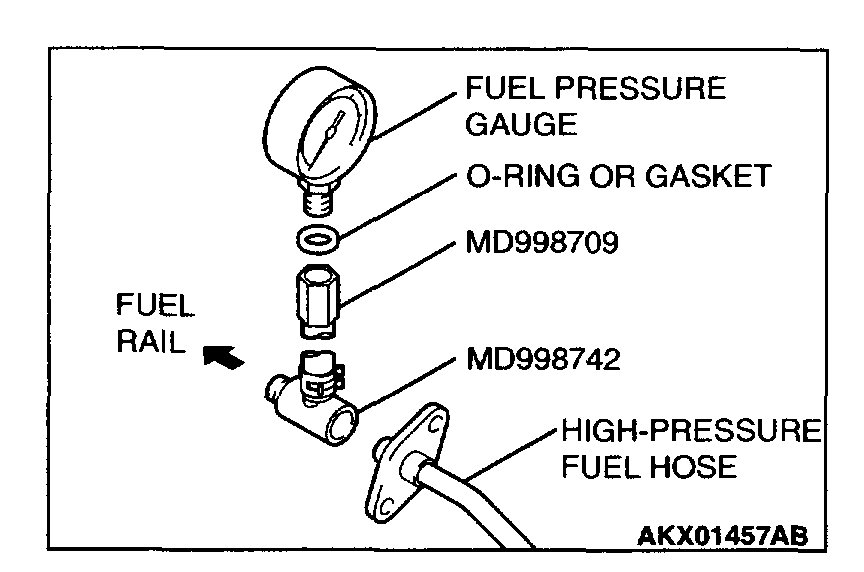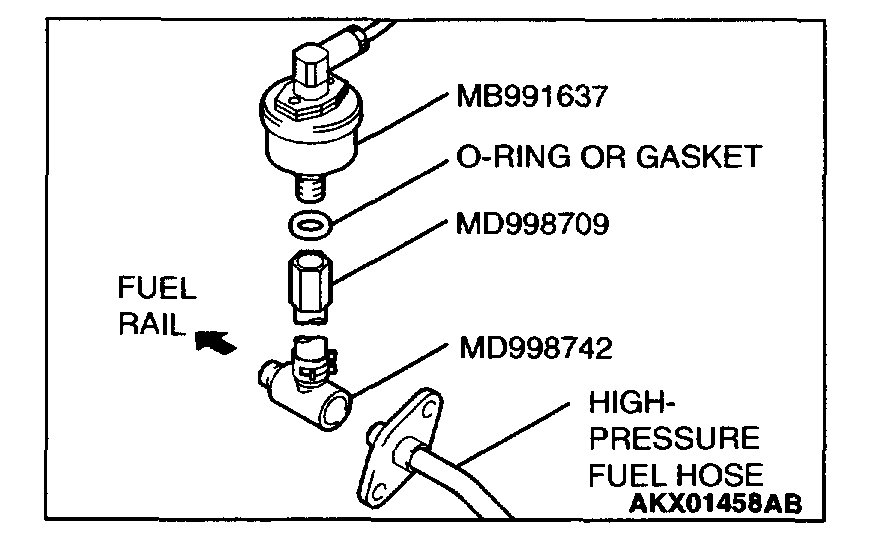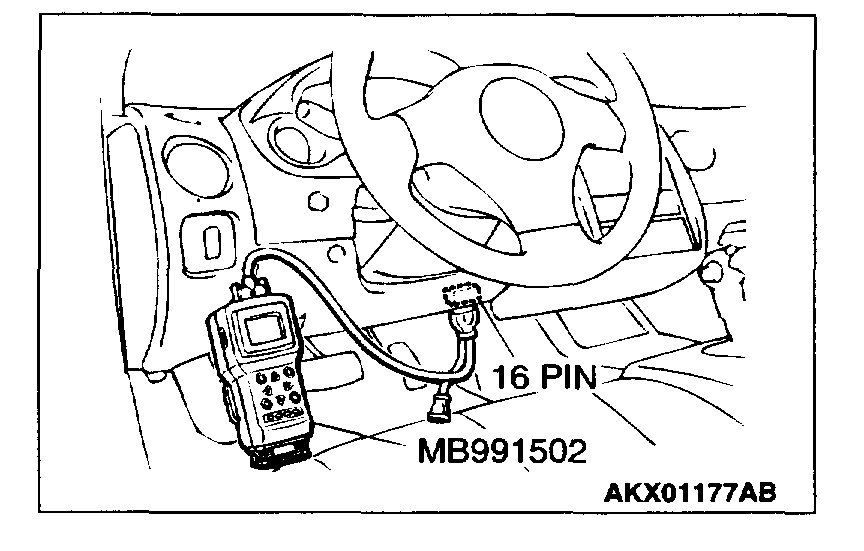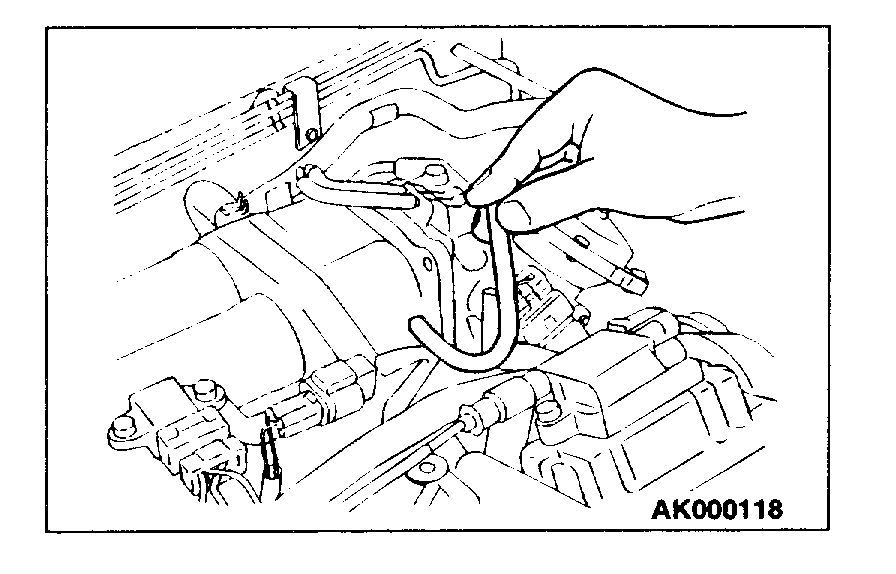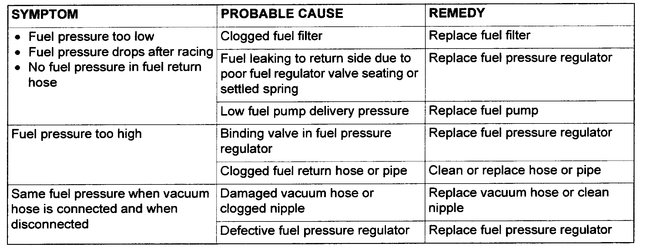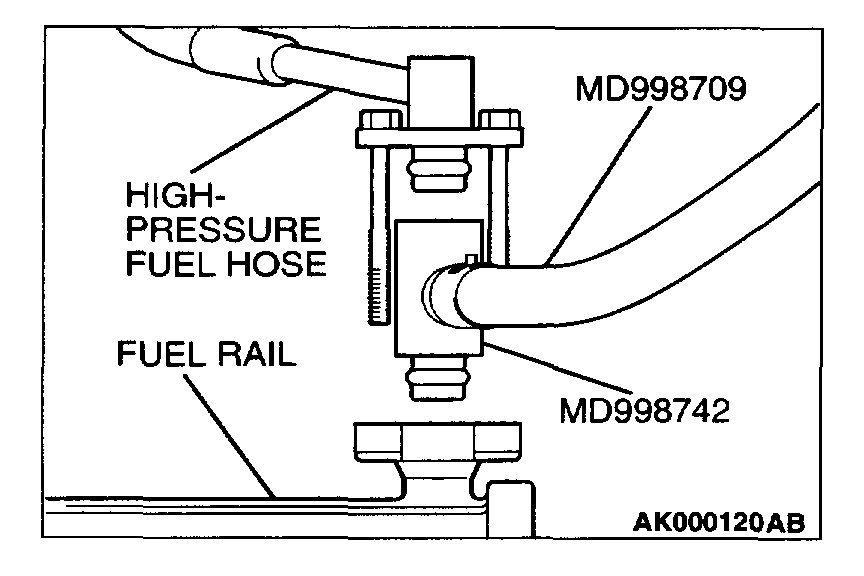Hi and thanks for using 2carpros.com
Based on your description, it sounds like a weak fuel pump or other fuel related issue. What may be happening is this. After sitting, fuel pressure drops off and then takes a few seconds to rebuild to start the engine.
What I want you to try is this:
1) Turn the key from the off to run position (not start) and count to 3
2) Turn the key off and repeat step 1 three more times.
3) After doing this, see if it starts normally
Let me know what happens. If it does start normally, it is a fuel pressure issue. Here is a link that shows in general how to check fuel pressure.
https://www.2carpros.com/articles/how-to-check-fuel-system-pressure-and-regulator
Here are the directions specific to your vehicle for testing pressure. The pressure specifications are included in the directions. Also, the attached pictures correlate with these directions.
____________________________
COMPONENT TESTS AND GENERAL DIAGNOSTICS
Pic 1
Required Special Tools:
- MB991502: Scan Tool (MUT-II)
- MB991637: Fuel Pressure Gauge Set
- MD998709: Adaptor Hose
- MD998742: Hose Adaptor
1. Release residual pressure from the fuel line to prevent fuel spray.
WARNING: To prevent a fire, cover the hose connection with shop towels to prevent splashing of fuel that could be caused by some residual pressure in the fuel pipe line.
2. Disconnect the high-pressure fuel hose at the fuel rail side.
3. Assemble the fuel pressure measurement tools as follows.
Pic 2
1. Remove the union joint and bolt from special tool
MD998709 (adaptor hose) and instead attach special tool
MD998742 (hose adaptor) to the adaptor hose.
2. Place a suitable O-ring or gasket on assembled special tools MD998709 and MD998742 and install the fuel pressure gauge.
3. Install the assembled fuel pressure measurement tools between the fuel rail and high-pressure fuel hose.
Pic 3
1. Remove the union joint and bolt from special tool MD998709 (adaptor hose) and instead attach special tool MD998742 (hose adaptor) to the adaptor hose.
2. Install special tool MB991637 (fuel pressure gauge set) to assembled special tools MD998709 and MD998742 via a gasket.
3. Install the assembled fuel pressure measurement tools between the fuel rail and the high-pressure fuel hose.
Pic 4
CAUTION: To prevent damage to scan tool MB991502, always turn the ignition switch to the "LOCK" (OFF) position before connecting or disconnecting scan tool MB991502.
4. Connect scan tool MB991502 to the data link connector.
5. Use the Actuator test 07 to drive the fuel pump. Check that there is no fuel leaking from any section when the fuel pump is operating.
6. Stop the fuel pump.
7. Start the engine and run at idle.
8. Measure fuel pressure while the engine is running at idle.
Standard value: Approximately 270 kPa (38 psi) at curb idle
Pic 5
9. Disconnect the vacuum hose from the fuel pressure regulator and measure fuel pressure with the hose end closed with your finger.
Standard value: 330 - 350 kPa (47 - 50 psi) at curb idle
10. Check to see that fuel pressure at idle does not drop even after the engine has been revved several times.
11. Revving the engine repeatedly, hold the fuel return hose lightly with your fingers to feel that fuel pressure is present in the return hose.
NOTE: If the fuel flow rate is low, there will be no fuel pressure in the return hose.
Pic 6
12. If any of fuel pressure measured in steps 10 to 13 is out of specification, troubleshoot and repair according to the table.
Pic 7
13. Stop the engine and observe fuel pressure gauge reading. It is normal if the reading does not drop within two minutes. If it does, observe the rate of drop and troubleshoot and repair according to the table. Start, then stop the engine.
1. Squeeze the fuel return line closed to confirm leak-down occurs from defective fuel pressure regulator.
2. Squeeze the fuel supply line closed to confirm leak-down occurs from defective fuel pump check valve.
3. If pressure continues to drop with both fuel lines squeezed closed, injector(s) are leaking.
Pic 8
14. Release residual pressure from the fuel pipe line.
WARNING: Cover the hose connection with shop towels to prevent splash of fuel that could be caused by some residual pressure in the fuel pipe line.
15. Remove the fuel pressure gauge, and special tools MD998709 and MD998742 from the fuel rail.
16. Replace the O-ring at the end of the high-pressure fuel hose with a new one.
17. Fit the high-pressure fuel hose into the fuel rail and tighten the bolts to specified torque.
Tightening torque: 4.9 ± 1.0 (44 ± 8 in-lb)
18. Check for fuel leaks.
1. Use scan tool MB991502 to operate the fuel pump.
2. Check the fuel line for leaks, and repair as needed.
19. Disconnect scan tool MB991502.
________________________________
Test this and let me know the results. If you have other questions or need help, let me know.
Take care,
Joe
Images (Click to make bigger)
Monday, August 3rd, 2020 AT 2:47 PM
(Merged)
